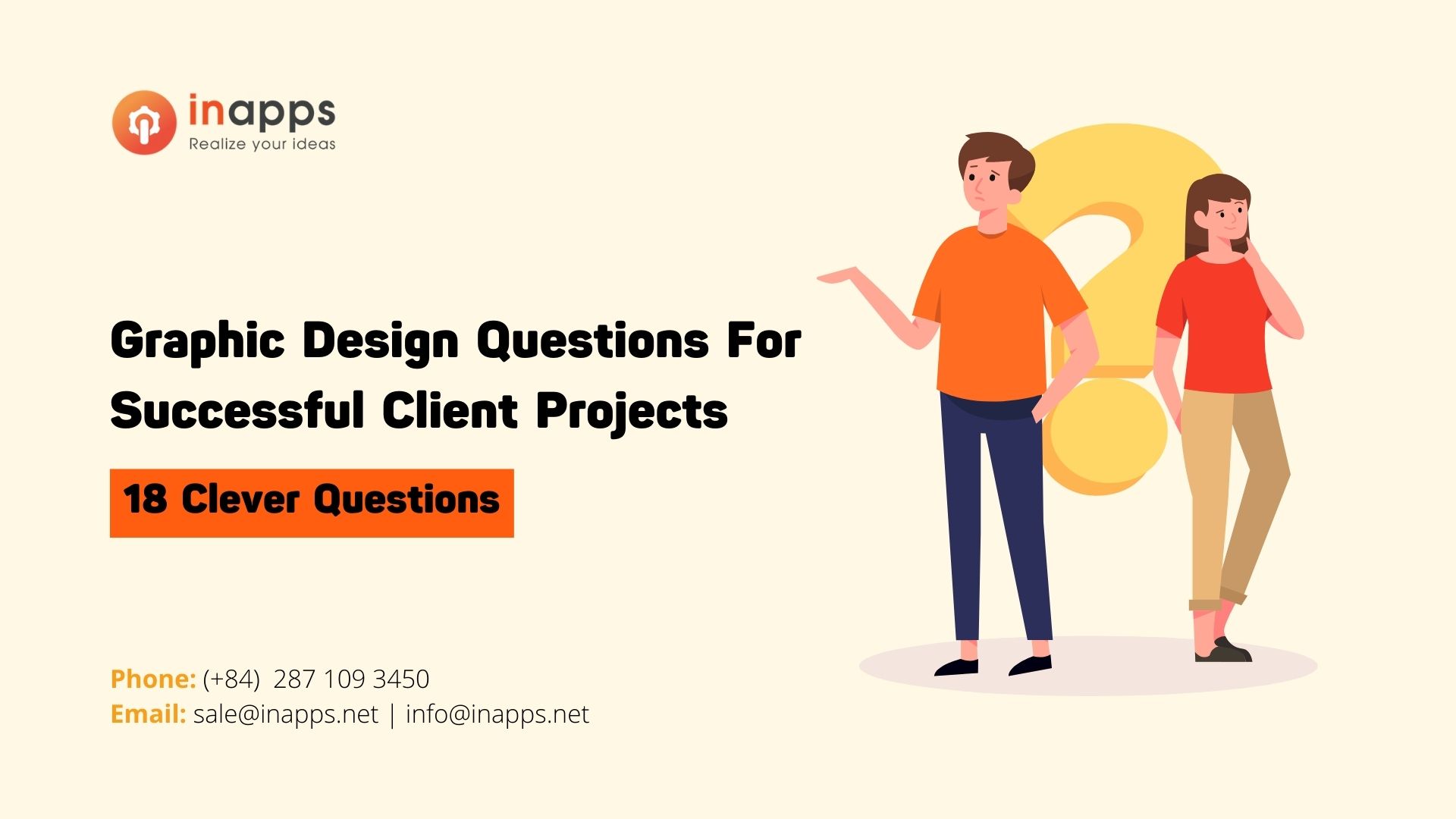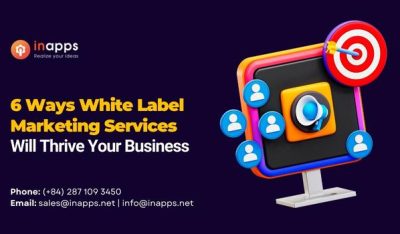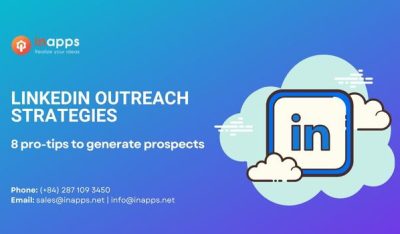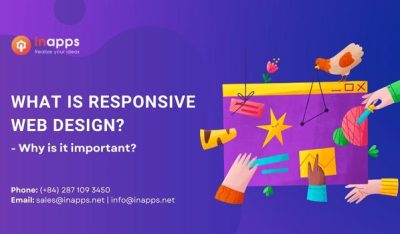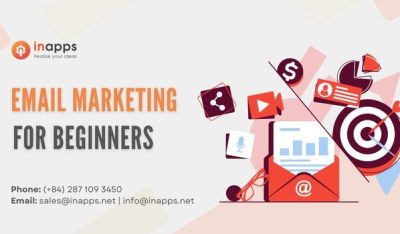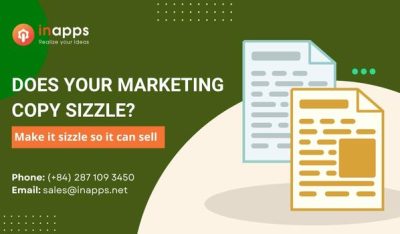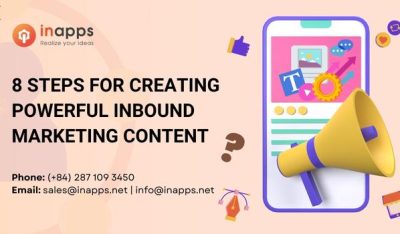- Home
- >
- Inbound Marketing
- >
- 18 Clever Graphic Design Questions For Successful Client Projects
18 Clever Graphic Design Questions For Successful Client Projects is an article sent to you by the InApps editorial team. Hope readers will have more useful knowledge at www.inapps.net
You are viewing the article: 18 Clever Graphic Design Questions For Successful Client Projects
Reading Time: 9 minutes
In the world of graphic design, dealing with clients who don’t know what they want can be a challenge. What questions to ask a client for graphic design are often built from experience. If you find yourself struggling when receiving answers, it might be because you are not asking the right questions. As we all know, client input is vital for getting a better perspective on a project and the overall success of the business.
After all, there are only so many hours in a week; promptly taking care of everything is essential. Therefore, asking the right graphic design questions for clients and getting the correct answers as soon as possible can allow for a project to be completed faster and meet the client’s expectations.
So what kind of question do you ask for brand design?
Let’s start from the very beginning; get to know your client!
1. Learn More About The Business
There are so many types of questions that you could ask, and some will be essential to answer before starting the project.

Some items will concern creating a logo design and others for general branding. No matter whether your client is a small business owner or a more developed company, these questions will be of great help.
What clients are looking for in design ranges as far as the human imagination can conceive. As a designer, you can learn about the company’s intention without frustrating the client by asking these questions, helping you deliver the project while exceeding expectations.
Start by asking:
2. Why Do You Want This Project?
While this may feel like a silly question, but having your client reiterate their reasons for wanting this project clears up the purpose of the assignment. The more often the project is explained by the client, the clearer the objective becomes.
Due to the lifecycle of graphic design and marketing projects, the goal behind a design could also change overnight, especially when the design hasn’t been officially started.

Clients may also have technical knowledge of the subject matter necessary to understand the project intent. If the client can break down this critical information early on, you should have no problems completing the design.
3. What Is the Goal of This New Project?
Is the company looking for a completely new image or are they looking for a fresh new look? Most companies redesign their logo every 5 to 10 years. Often, they are looking to keep the same logo but just want a more modern look.
Marketing campaigns on the other hand play to a certain buyer persona, product, or message. The client has a vision for the project in mind, and you can use the client’s goals for the project to give you an outline for the project.
When building a website or a app, the design requires a focus on how it feels to use the software, and what the end result of using it should be. Clear goals early on helps clear away an incredible amount of production and revision after the project is submitted to the client.
4. Do You Want to Use Existing Brand Colors or Do You Have a Color Palette in Mind?

Color plays a critical role in graphic design, especially in composing a logo. Color can represent the company’s values and play a part in what the company does.
You expect a surf shop to have some degree of blue in their logo, just as you anticipate an all-natural food store to have green in their logo.
Color theory and Brand Association are key to developing the right emotion when customers interact with your design. As human beings, the first thing we see when interacting with something is the most important.
Pastel palettes are inviting, fun, and provide a low stress environment for consumers. We can see this design philosophy in modern task software like Monday.com or Slack.

Brands may need to move away from colors that clash with the message and idea behind their brand in order for their marketing and content to be more effective and engaging.
5. What Are the Different Names for Your Business? Which One Do You Want in Your Design?
Not every company name is straightforward.
As brands grow and change over time, so does their name, logo, and how they’re remembered. For example, CVS, the pharmacy and convenience store chain was once known as Consumer Value Stores. As customers began to associate their brand with ‘CVS’, the business changed their name to match.
You can save headaches in production by learning client preferences and legal requirements early on. Some demand brand names be emboldened and include a trademark in any text, while others prefer to go by colloquial names used by their customers.
Know the client’s choice, and you can convey the right message every time.
6. Does the Company Have a Slogan or Tagline?
Some companies have a motto or a slogan.

You should keep taglines as simple as possible, regardless of the reason the client has one. Catchwords can be a striking attribute that links your brand to the intended audience.
It can deliver your message to potential customers and current consumers clearly and decisively.
7. Describe What Sets Your Business Apart in One Sentence.
For example, the company may be trying to display their speedy service. Therefore, adding an element that represents swift service becomes crucial for the brand. If a company strongly values customer satisfaction, the design should echo the company’s values through the visual connection in the logo design.
8. What Do You Like or Dislike About Your Competitor’s Branding? Do You Have an Idea in Mind?
Often clients have a plan of what kind of design they want to use to represent their business.
When they don’t, try asking the client what they enjoy about what their competitors have done. Check on industry leaders, or something they’ve seen recently that might have inspired this project in the first place.
Knowing the voice and message behind their competition’s branding can help you know how the client wants their business to be perceived by new customers.
9. What Are Your Target Demographics by Age, Sex, Income, and Region?
Some brands incorporate images within their logo to give it a unique look that describes what the company does.

Graphic and image mood boards can be a good way to help identify the aesthetic the client wants to capture, and the emotions they want their brand to be associated with. If for example you were designing a brochure for two different ski lodges, the demographic changes the look associated with the brand.
Where one lodge is about the event of skiing itself, another may be about the relaxation and community at the lodge.
For our ‘active’ lodge, the client may be looking for warm colors and pictures of skiers standing or action shots. In the latter ‘comfort’ lodge, it might be better to use cool shots of people gathered around a fire or smiling with foods and drink.
Demographics Are Some of the Most Important Graphic Design Questions for Clients– Because the Audience Matters
Find out who the client is targeting. If they have a handful of different demographics, try to plot them into separate buyer personas. This way you can find a look that any of their customers will enjoy.
10. Does the Client Prefer Typography?
This is a great, but misleading question. Show the client a set of typography examples when you pose this question.

The trick here is to see if the client is looking for a specific visual hierarchy. Most clients don’t have the design vocabulary for explaining a more or less extreme visual hierarchy to the design.
More often than not, clients looking for typography are thinking of a particular style that helps break up the positive space and know the ratio of positive to negative space they want in their design.
11. Who Are Your Main Competitors?
It’s important to know what the competition looks like before you begin your graphic design project. It’s entirely possible you could make the project look too similar to their competitors branding.
You can guarantee that your design is different enough from the client’s competitors while still looking more lucrative than their rivals. All you need to do is create a list of the company’s contenders and research before delivering the final product.
12. Are You Looking for a Serif, Sans Serif, Calligraphy, or Display Font?
This is a must-have question for any designer before starting a project. While most clients won’t know what you’re talking about, simply bringing three examples of each font type while explaining each will help complete the picture for the client.
There’s no trick or example for this question– but asking it will save you production time and potentially a meeting you don’t need.
13. Where Is the Design Going to Be Used?
Every designer should know the mediums where their designs will be used. Successful logos look great in all format sizes, while complex logos will not work when printed in smaller formats, such as business cards.

This is due to the difference in Dots Per Inch or DPI. DPI is a measurement of the density of the printer ‘dots’ that make up a printable image. Just as mono-colored pictures make up your display screen, printers can only fit so much detail in a small space.
14. What Has Been Your Most Successful Marketing Campaign?
In the world of modern marketing practices, conversion rate is everything. You can cut out a lot of time and generate better success by looking back at what message has been the most productive.
Check with the client to see what messaging historically brought them the most qualified leads. This is a great way to see what their target audience actually wants to hear, and help you create repeat customers.
15. When Do You Need This Ready For Distribution?
Rome wasn’t built in a day, and neither has most graphic design projects.
In order to meet client expectations and create a pipeline for the graphic design project’s completion, you need to know your delivery times. This also gives you an opportunity to hedge client expectations. For example, if it’s been requested to produce an eight hour video with VFX in twenty-four hours, you may need to extend the due date of the design.
16. What Is Your Budget for This Project?

No one wants to have this conversation. But when you’re gathering information from the client, this is the perfect opportunity to revisit the cost of the project.
Even if a price was originally established, the client may have new ideas or functions that need to be added that came up during this meeting. Make sure all terms are acceptable and use this opportunity to help you gauge the client’s expectations.
17. Have You Worked With a Designer Before? Tell Us Your Experience.

Alternatively, you should ask regular clients what they thought of the last project you did together.
You can always shore up client assumptions on your work and strengthen your relationship for future projects by asking the client how they felt about past designs. How they felt about the work and who delivered it can show you what you need to do to deliver quality work.
18. Is There Anything You Want Us to Know That Wasn’t Covered Above?
The question above should always be at the end of your questionnaire.
When you’re sure you’ve gotten all the answers you need, review with the client and gather any extraneous details and concerns they may have on the project. This secures that all of your information is correct to the best of the client’s ability and find details they might not have thought of the first time around. This is one of the most important steps in graphic design.
Final Tips For Your Next Graphic Design Project
There’s a lot of information you need every time you work on a new project with a client. Establish a moderate pace to each meeting and don’t let either the client or yourself ramble or meander too much. Your time is another valuable factor. Don’t let the interview feel like an interrogation. Find the right balance of graphic design questions for clients and their patience.
By adding these questions and a few visual examples, you can supply your client with decisive and gripping designs that always achieve their goal. Take it from your friends at Chatter Buzz.
Follow this to make sure you’ve got 18 Clever Graphic Design Questions For Successful Client Projects. Save and share with those around you these extras.
To learn more about Inbound Marketing
Contact us:
www.inapps.net
List of Keywords users find our article on Google
[sociallocker id=”2721″]
| clever graphic design |
| “saas marketing” -site:facebook.com -site:youtube.com -site:twitter.com |
| client questionnaire graphic design |
| graphic design questionnaire for clients |
| branding questions for clients |
| questions a graphic designer should ask a client |
| questions to ask clients for graphic design |
| questions to ask client for logo design |
| questions to ask design clients |
| design questions to ask clients |
| graphic design client questionnaire template |
| brand questions to ask clients |
| “big shot marketing & design” |
| “brand design” “brand strategy” or marketing or seo or “marketing strategy” or “collateral design” |
| what questions to ask a client for graphic design |
| “graphic design” wordpress or brand or ecommerce or logo |
| graphic designer questions for clients |
| what questions should a graphic designer ask a client |
| “graphic design” |
| “rival mind” |
| logo design questions to ask client |
| questions to ask a client when designing a marketing plan |
| logo design brief questions |
| clever questions |
| questions to ask client before starting a design project |
| graphic design questionnaire |
| questionnaire graphic design |
| logo design questions |
[/sociallocker]
Let’s create the next big thing together!
Coming together is a beginning. Keeping together is progress. Working together is success.




